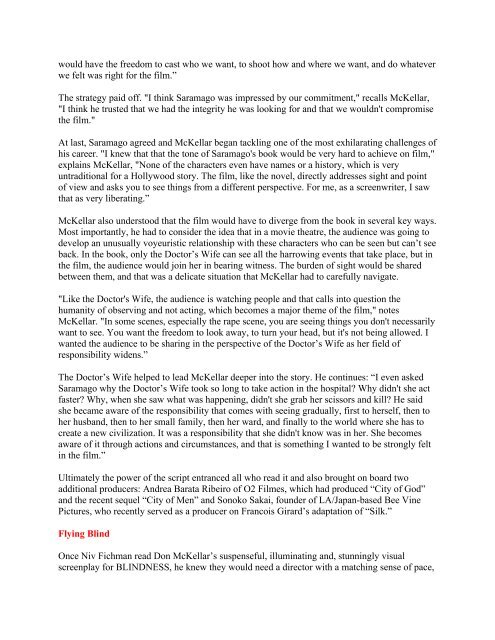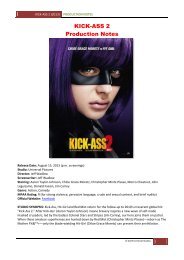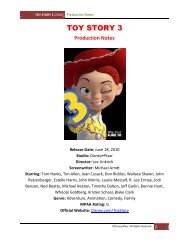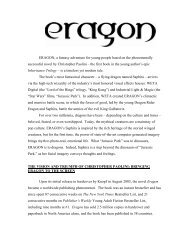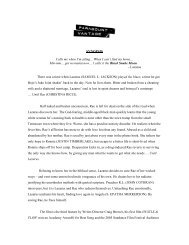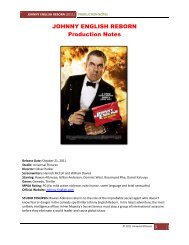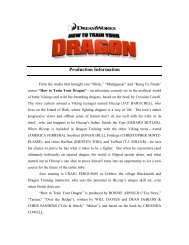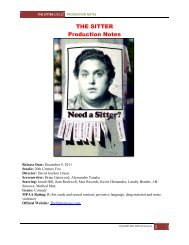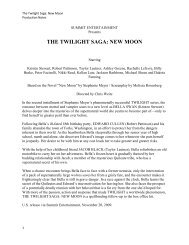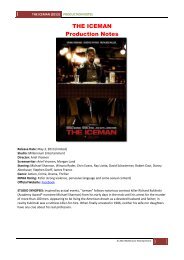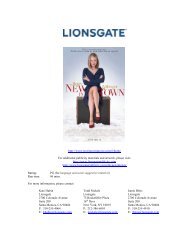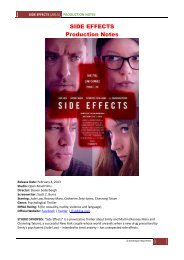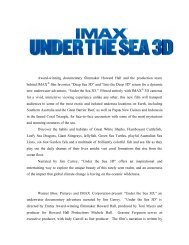Create successful ePaper yourself
Turn your PDF publications into a flip-book with our unique Google optimized e-Paper software.
would have the freedom to cast who we want, to shoot how and where we want, and do whateverwe felt was right for the film.”The strategy paid off. "I think Saramago was impressed by our commitment," recalls McKellar,"I think he trusted that we had the integrity he was looking for and that we wouldn't compromisethe film."At last, Saramago agreed and McKellar began tackling one of the most exhilarating challenges ofhis career. "I knew that that the tone of Saramago's book would be very hard to achieve on film,"explains McKellar, "None of the characters even have names or a history, which is veryuntraditional for a <strong>Hollywood</strong> story. The film, like the novel, directly addresses sight and pointof view and asks you to see things from a different perspective. For me, as a screenwriter, I sawthat as very liberating.”McKellar also understood that the film would have to diverge from the book in several key ways.Most importantly, he had to consider the idea that in a movie theatre, the audience was going todevelop an unusually voyeuristic relationship with these characters who can be seen but can’t seeback. In the book, only the Doctor’s Wife can see all the harrowing events that take place, but inthe film, the audience would join her in bearing witness. The burden of sight would be sharedbetween them, and that was a delicate situation that McKellar had to carefully navigate."Like the Doctor's Wife, the audience is watching people and that calls into question thehumanity of observing and not acting, which becomes a major theme of the film," notesMcKellar. "In some scenes, especially the rape scene, you are seeing things you don't necessarilywant to see. You want the freedom to look away, to turn your head, but it's not being allowed. Iwanted the audience to be sharing in the perspective of the Doctor’s Wife as her field ofresponsibility widens.”The Doctor’s Wife helped to lead McKellar deeper into the story. He continues: “I even askedSaramago why the Doctor’s Wife took so long to take action in the hospital? Why didn't she actfaster? Why, when she saw what was happening, didn't she grab her scissors and kill? He saidshe became aware of the responsibility that comes with seeing gradually, first to herself, then toher husband, then to her small family, then her ward, and finally to the world where she has tocreate a new civilization. It was a responsibility that she didn't know was in her. She becomesaware of it through actions and circumstances, and that is something I wanted to be strongly feltin the film.”Ultimately the power of the script entranced all who read it and also brought on board twoadditional producers: Andrea Barata Ribeiro of O2 Filmes, which had produced “City of God”and the recent sequel “City of Men” and Sonoko Sakai, founder of LA/Japan-based Bee VinePictures, who recently served as a producer on Francois Girard’s adaptation of “Silk.”Flying BlindOnce Niv Fichman read Don McKellar’s suspenseful, illuminating and, stunningly visualscreenplay for BLINDNESS, he knew they would need a director with a matching sense of pace,


